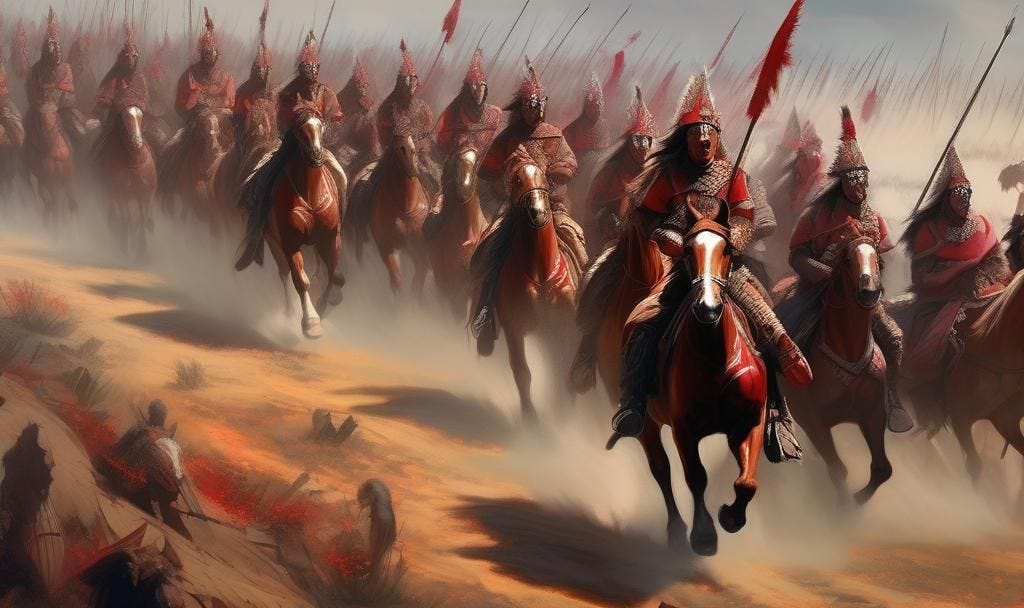Visualize a Comanche Mandala & Diagram How the West Was Won by Six Guns
West of 98th Parallel
Alfred A. Taylor, later governor of Tennessee, who covered the council as a reporter described the Comanche’s approach.
Thousands of mounted warriors concentrated and formed into a wedge-shaped mass, the edge of their wedge pointing toward us. In this mass formation, with war paraphernalia, their horses striped with war paint, riders bedecked with war bonnets and their faces painted red, came charging in full speed toward our columns… Within a mile of our procession, the wedge, without hitch or break, threw itself into the shape of a huge ring or wheel without hub or spokes, whose rims consisted of five wheels within wheels. This ring, winding around and around with the precision of a fresh-oiled machine, approached nearer and nearer to us with every revolution. Reaching within a hundred yards of us at a breakneck speed, the giant wheel ceased to turn and suddenly came to a standstill. page 225.
The Battle of Walker’s Creek became one of the defining moments in the history of Texas and the American West.
Jack Hays and fifteen men were scouting west of Austin and San Antonio. They stopped to gather honey at Walker’s Creek, a tributary of Guadulupe River fifty miles north of San Antonio.
[1] Hays dispatched two of his men to see if they were being followed. They return reporting seeing tracks. The men saddled up and counter-marched toward the Indians.
[2] As Hays’ men approached three or four Indians made a great show of alarm and a greater show of fleeing for their lives. An old Indian trick.
[3] Hays did not pursue them. Soon seventy-five Indians showed themselves. Hays concealed his men at the base of his hill, then broke and galloped at full speed some 2-300 yards, circled the bottom of the hill, emerged behind the Indians and charged their flank.
What happened next - Seventy-five Penateka Comanches on fifteen Rangers, arrows and lances against repeating pistols… Several Rangers were badly wounded, but their pistols were dropping Indians from the saddle at an alarming rate. The fight lasted fifteen minutes before the Indians broke and fled. It became a running fight that carried on for more than hour over two miles of rough terrain. … With forty dead or wounded Indians against one dead Ranger and four wounded. Still the Indians rallied again and again. Then, Hays’s men ran out of ammo. Hays coolly called out to see if anyone had any bullets left. One man named Robert Gillespie rode forward. “Shoot the chief”, ordered Hays. This Gillespie did, dropping the chief from his saddle at ‘thirty steps’. The remaining Indians scattered.
…
“Up to this time”, Samuel Walker wrote in a letter to Samuel Colt in 1846, “these daring Indians had always supposed themselves superior to us, man to man, on horse… the result of this engagement was to turn those notions aside.” pages 144-146
Excerpts from
Gwynne, S C. Empire of the Summer Moon : [Quanah Parker and the Rise and Fall of the Comanches, the Most Powerful Indian Tribe in American History]. London, Constable, 2011.




